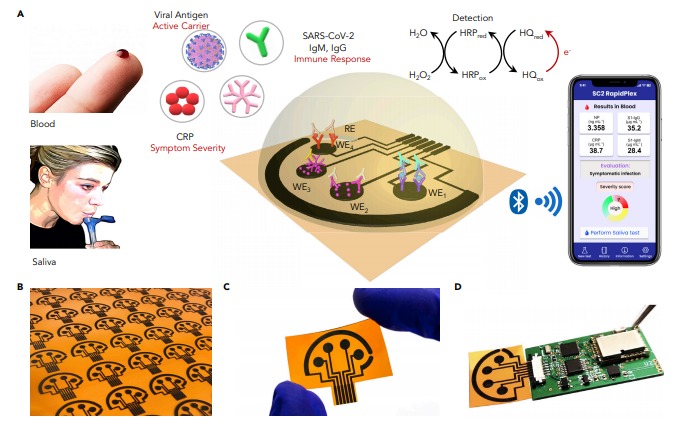2020/10/7 ドイツ連邦共和国・フリードリヒ・シラー大学イェーナ

・ フリードリヒ・シラー大学イェーナ、フランフォーファー応用光学・精密機械工学研究所(IOF)およびライプニッツ光技術研究所等から成る研究チームが、グラス光ファイバーに 2D 遷移金属ジカルコゲニドを成長させる、CVD 法をベースの技術を開発。
・ 2D 材料は優れた特性を有し、様々なアプリケーションが可能なため注目されているが、フレキシブルで小口径の光ファイバーと組み合わせることで、センサー、ノンリニアオプティクスや量子技術の分野での新しいアプリケーションが可能となる。
・ 原子薄の 2D 材料の光ファイバーへの転写は煩雑な作業だが、2D 材料を光ファイバーに直接成長させる新技術では、ハイブリッドなコンポーネントの大規模な製造が飛躍的に容易になる。同技術では 700℃超の高い温度が必要だが、基板となる高純度の石英ガラスは最高で 2,000℃を耐熱。
・ 同技術は、2D 材料と光ファイバーの双方の優れた特性を統合した、インテリジェントな材料プラットフォームを創出するもの。2D 材料の機能を付与した光ファイバーでは、光と材料間の相互作用の時間がより長くなる。
・ 同ハイブリッドコンポーネントのアプリケーションが特に期待される分野は、低濃度のガスを検出するセンサー技術。ファイバーを移動する緑色光が 2D 材料で機能化したファイバー部分で環境の情報を拾い上げる。2D 材料の蛍光特性は外部からの影響で変化し、光は赤色に変化して計測デバイスに戻る。
・ 光ファイバーは極めて微細なため、バイオテクノロジーや医療分野のアプリケーションにも適する。また、生物や化学の分野の分光アプリケーション用に単色のレーザー光を白色光に変換する、ノンリニア光変換器としての利用も可能。さらに、量子エレクトロニクスや量子通信分野でのアプリケーションも見込む。
URL: https://www.uni-jena.de/en/201007_2Dphotonik
<NEDO海外技術情報より>
(関連情報)
Advanced Materials 掲載論文(フルテキスト)
Scalable Functionalization of Optical Fibers Using Atomically Thin Semiconductors
URL: https://onlinelibrary.wiley.com/doi/10.1002/adma.202003826
Abstract
Atomically thin transition metal dichalcogenides are highly promising for integrated optoelectronic and photonic systems due to their exciton‐driven linear and nonlinear interactions with light. Integrating them into optical fibers yields novel opportunities in optical communication, remote sensing, and all‐fiber optoelectronics. However, the scalable and reproducible deposition of high‐quality monolayers on optical fibers is a challenge. Here, the chemical vapor deposition of monolayer MoS2 and WS2 crystals on the core of microstructured exposed‐core optical fibers and their interaction with the fibers’ guided modes are reported. Two distinct application possibilities of 2D‐functionalized waveguides to exemplify their potential are demonstrated. First, the excitonic 2D material photoluminescence is simultaneously excited and collected with the fiber modes, opening a novel route to remote sensing. Then it is shown that third‐harmonic generation is modified by the highly localized nonlinear polarization of the monolayers, yielding a new avenue to tailor nonlinear optical processes in fibers. It is anticipated that the results may lead to significant advances in optical‐fiber‐based technologies.



